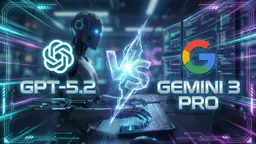Whisk 是什麼?
Whisk 是由 Google Labs 開發的創新型 AI 圖像生成工具,旨在簡化和加速創意過程。與傳統的文本基於 AI 生成器不同,Whisk 采用視覺優先的方法,允許用戶上傳圖像以定義生成輸出的主題、場景和風格。該工具利用 Gemini 進行圖像標題生成,並使用 Imagen 3 進行圖像生成,確保 AI 能夠理解和重新組合輸入圖像的關鍵元素。
Whisk 的用戶友好界面支持多個圖像提示和文本修飾,使其成為快速創意和實驗的理想選擇。無論您是在創作數字藝術、設計產品概念,還是為營銷生成視覺想法,Whisk 都提供了一種快速且直觀的方法來實現您的創意願景。目前,Whisk 在美國可用,是 Google 為創作者和企業提供更多可訪問和用戶友好 AI 工具的持續努力的一部分。

Whisk 的特點
Whisk 擁有多項關鍵特點,使其與其他 AI 圖像生成工具區分開來:
- 視覺優先輸入:用戶可以拖放代表主題、場景和風格的圖像,使傳達想法變得更容易,無需精確的文本提示。
- Gemini 整合:Gemini 自動從輸入圖像生成詳細的標題,這些標題隨後用於為 Imagen 3 創建提示,確保準確且上下文相關的輸出。
- 快速創意和探索:Whisk 設計用於快速視覺探索,使用戶能夠快速生成並修飾多個想法變體。
- 靈活的提示編輯:用戶可以查看並編輯由 Gemini 生成的底層提示,以修飾結果,提供更大的控制和定制。
- 創意工作流程整合:Whisk 專為創意工作流程設計,特別是在產品設計中,如生成數字毛絨玩具、琺瑯胸針和貼紙。
- 有限的可用性:目前,Whisk 仅在美國可用,允許 Google 收集寶貴的用戶反饋並在潛在的全球推出前完善工具。
Whisk 是如何工作的?
Whisk 通過允許用戶輸入視覺元素並提供文本指導,簡化了圖像創建過程。該工具利用 Gemini 語言模型生成輸入圖像的詳細標題,這些標題隨後由 Imagen 3 模型用於生成新圖像。用戶可以輸入最多三張代表主題、場景和風格的圖像,工具將重新組合這些元素以生成新的、獨特的圖像。
該過程如下:
- 用戶上傳最多三張代表主題、場景和風格的圖像。
- Gemini 分析圖像並生成詳細的標題。
- 這些標題用作 Imagen 3 的提示。
- Imagen 3 根據提示和視覺輸入生成新圖像。
- 用戶可以通過編輯文本提示或上傳新圖像來修飾結果。
這種方法允許快速探索想法並鼓勵創意實驗,使 Whisk 成為腦暴和初始概念開發的理想選擇。
使用 Whisk 的好處
Whisk 在多個方面超越了傳統的文本基於 AI 圖像生成器:
- 視覺直覺:將三張圖像結合成一張新圖像的能力使工具更加直觀和易用,特別是對於發現文本提示具有挑戰性的用戶。
- 快速原型設計:Whisk 使創意想法的快速探索和迭代成為可能,增強了創意過程,使用戶能夠在短時間內生成多個變體。
- 增強的創意:通過重新組合不同的視覺元素,Whisk 促進了新的創意水平,帶來了意外和創新的結果。
- 自動標題:工具生成標題以引導圖像創建過程,確保連貫性和上下文。
- 靈活性:在專注於視覺輸入的同時,Whisk 仍允許用戶使用文本提示修飾生成的圖像,提供更細緻和精確的輸出。
- 用戶反饋:平台鼓勵用戶反饋,幫助 Google 改善工具並滿足用戶需求。
Whisk 的替代品
雖然 Whisk 在 AI 圖像生成方面提供了獨特的方法,但市場上還有其他提供類似功能的工具:
- DALL-E 2:OpenAI 的圖像生成工具,使用文本提示生成圖像。它提供高質量的輸出,但缺乏 Whisk 的視覺優先方法。
- Midjourney:一個以藝術和風格化輸出聞名的文本到圖像 AI 工具。它有一個強大的社區,但對於不熟悉文本提示的用戶可能較不直觀。
- Stable Diffusion:一個可以本地運行的開源圖像生成模型。它提供了靈活性,但可能需要更多的技術知識才能有效使用。
- Adobe Firefly:集成在 Adobe Creative Cloud 套件中的 Adobe AI 圖像生成工具。它提供了類似於 Whisk 的功能,但更側重於與 Adobe 生態系統的整合。
- Canva Text to Image:集成在 Canva 平台中的簡單、用戶友好的工具。它不如 Whisk 強大,但可能適合基本的圖像生成需求。




總結而言,Whisk 在 AI 圖像生成方面邁出了重要的一步,提供了獨特的視覺優先方法,簡化了創意過程。其 Gemini 和 Imagen 3 技術的整合,加上用戶友好的界面,使其成為快速創意和概念開發的強大工具。雖然目前面臨市場上已建立玩家的競爭,但 Whisk 的創新特點和對用戶反饋的關注使其成為尋求簡化視覺內容創建過程的創作者和企業的有前途的選擇。隨著 Google 繼續完善和擴展工具,Whisk 有潛力成為 AI 輔助創意世界的遊戲改變者。





